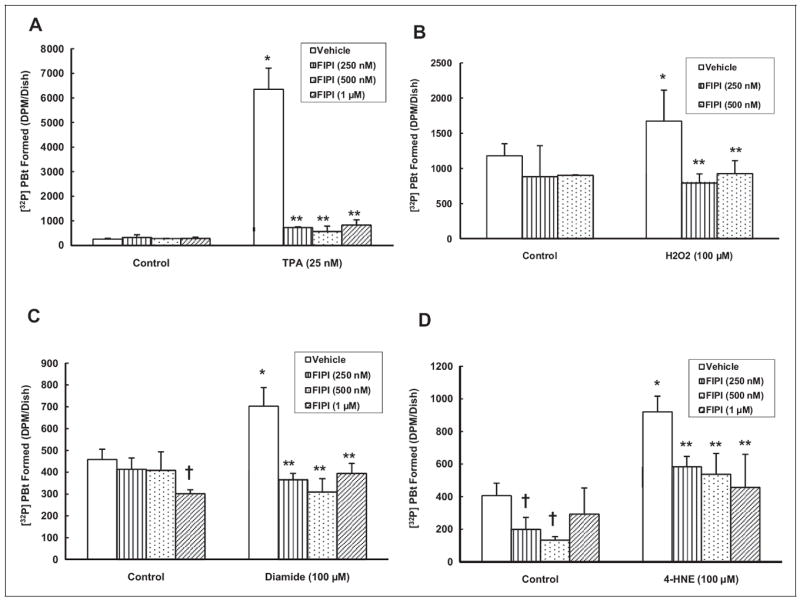Figure 6.

5-Fluoro-2-indolyl des-chlorohalopemide (FIPI) attenuates the oxidant-induced phospholipase D (PLD) activation in mouse aortic endothelial cells (MAECs). The MAECs (5 × 105 cells/35 mm dish) were labeled with [32P]orthophosphate in phosphate-free Dulbecco-modified Eagle medium (DMEM) alone or phosphate-free DMEM containing different concentrations (250, 500 nmol/L, and 1 μmol/L) of FIPI for 12 hours. Following [32P]orthophosphate labeling, cells were treated with minimal essential medium (MEM) or MEM containing TPA (25 nmol/L; A), H2O2 (100 μmol/L; B), diamide (100 μmol/L; C), and 4-hydroxy-2-nonenal ([4-HNE] 100 μmol/L; D) for 1 hour in the presence of 0.05% (volume/ volume [vol/vol]) 1-butanol. At the end of the incubation period, [32P]phosphatidylbutanol ([32P]PBt) formed was determined. Data represent mean ± standard deviation (SD) calculated from 3 independent experiments. *Significantly different at P < .05 as compared to cells treated with MEM alone. **Significantly different at P < .05 as compared to cells treated with MEM containing agonist or oxidant alone.
